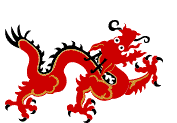During the Vietnam War, the defense of
Air Bases mirrored the conflict itself: There was no rear echelon once
the entire country became a battlefield. Air Bases relatively,
unaffected by ground forces in past wars, were no longer considered safe
havens. They, too, suffered from costly ground assaults and mortar shelling.
Monkey Mountain is located on the end of a peninsular, near the city of Đà Nàng. The 366th SPS and Marines provided security for the radar and communications facility located on top. In the late 60's, Sentry Dogs (from the US Navy Sentry Dog Section) were used to enhance security. Handlers rotated for a week tour on the mountain and enjoyed the cool weather. The Navy kennels was located on China Beach. They hosted a party for I Corp dog handlers in mid 1969, shortly after the bomb dump blew up (the second time). Air Force handlers from Đà Nàng AB & Marine Dog handlers really enjoyed their hospitality. James Escobedo, Naval Security Guard, Đà Nàng AB1968-69 has an 8 mm film with footage of an unknown handler and dog team. The description fits the the dog Brandy, according to Richard King. Please contact James if you are the handler. The film has footage of Đà Nàng AB's bomb dump exploding .
At the end of the American cavalry era, the Army disposed of its horses by machine gunning them to death. In our war, the dogs were treated the same way. Only it was done in a more “humane” manner. Some excess dogs were reassigned to other bases in the Pacific but most were killed. The US Military has pledged not to dispose of military working dogs in such a manner again. Please read Death of a Warrior. |




